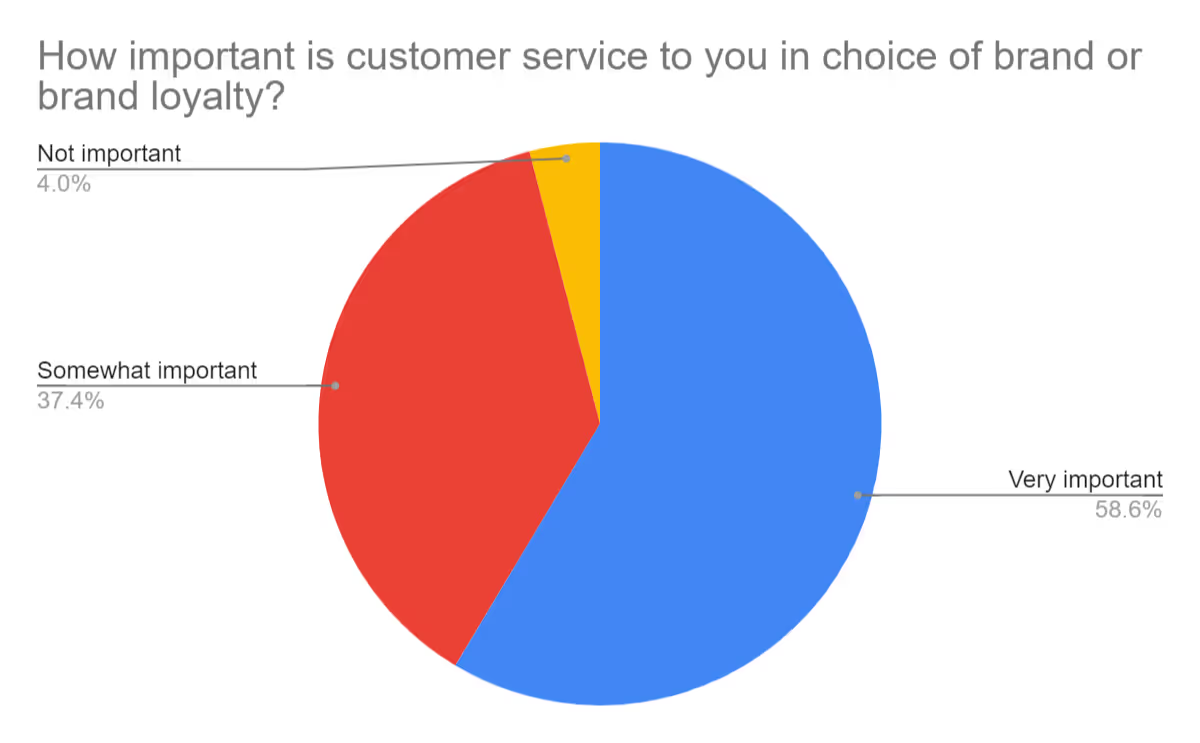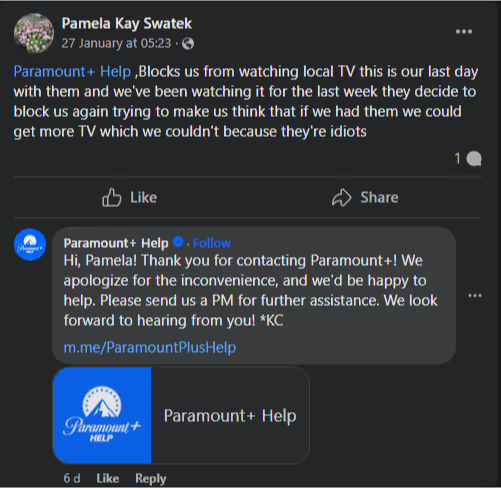Read: “I understand” and “Absolutely, I hear what you are saying!”
Why do the two sentences read completely differently when they both carry the same meaning? One sounds a little too formal, scripted even. While the other gives a more reassuring vibe as if the speaker genuinely cares about the listener.
The secret lies in the tone of voice, and yes it applies to written text too. Brands use tone of voice in customer service to establish and maintain positive customer relationships. How a brand communicates upholds its image in customers’ eyes — it could be witty, warm, formal, bold, or authoritative. It all depends on how your customer service reps communicate.
So what exactly is tone of voice in customer service and how can you leverage it to enhance customer satisfaction and brand loyalty? In this blog post, you will learn all about it!
Understanding tone of voice
The tone of voice in customer service refers to how you say things and what they make your customers feel. You could use a professional, authoritative tone and make your customers feel taken care of, or you could be casual and friendly so your customers feel comfortable and relaxed.
Here’s an example of Amazon using formal, yet empathetic language:

The tone of your voice in customer service has 4 major elements:
1. Language: Your choice of words has a significant impact on your tone. A simple addition of the word “Ugh” shows that Pringles feels genuinely sorry for disappointing a customer:

2. Empathy: Empathy is an important component of customer service voice. Customers say that they are more willing to buy from a brand that is more empathetic and understanding towards its customers.
3. Attitude: It matters what you say… but it matters more how you say it. When you take a customer’s call with a will to help, it shows in your customer service tone.
4. Context: Understanding the situation your customer is facing and their feelings about it, helps you tailor your tone of voice accordingly. Imagine someone calling to tell you how their job is at stake due to poor connectivity and you sticking to a casual or worse, humorous tone… Yikes!
Why is tone of voice important in customer service?
Consumers are more loyal to businesses that understand their problems and are willing to solve them. An indifferent or distant customer service call can leave them feeling unvalued, affecting their decision to make future purchases.
Here are the results of a survey by Statista showing the relationship between customer service and brand loyalty:

The psychology behind tone of voice
Human brains are sensitive to not just words, but the way they are uttered. When we communicate, the tone carries a significant weight, shaping the way our words are received. An empathetic tone triggers positive responses and creates a sense of connection and trust. On the other hand, if you use a cutting or harsh customer service tone, chances are you might never hear back from that customer.
Albert Mehrabian was a psychology professor at the University of California, Los Angeles. In his book, Silent Messages, he introduced the 7-38-55 Rule for emotional communication.
According to this rule, only 7% of the communication is conveyed through words. The remaining 38% depends on the tone of voice and 55% on the body language.
Understanding this dynamic can empower businesses to craft a tone that not only conveys information but cultivates positive experiences and enduring relationships.

💡Because online customer experiences miss body language, words and the tone of voice become even more important.
Tone of voice and brand identity
The tone of voice in customer service is also important for maintaining a consistent brand identity. If your brand is known for its playfulness and humour, it is only right if your agents respond to customer inquiries with a light-hearted tone.
Here are a few tips to help you align your tone of voice in customer service with your brand’s overall identity:
- Define your tone and voice: The first step to nailing your brand tone and voice is to define what they are. Go over your brand’s value, vision, and personality and combine them with your brand perception and emotions you want to instil in your customers.
- Map out a style guide: A style guide not only defines your brand’s colours, logos, fonts, and images, but also your brand’s personality, attitude, and core emotions. Using a style guide will help you maintain consistency throughout your brand communications.
- Be adaptable: A style guide or scripted responses can help you with brand image consistency but it is not a good idea to always stick to them. Learn to adapt to your customer’s needs and emotions for a more customer-centric approach.
Best practices for tone of voice in customer service
Here are some best practices to help you improve your tone of voice while dealing with customers:
1. Sound like a human
You may use prewritten responses as a reference, but always loosen up your language and employ a more conversational tone to avoid sounding like a robot.
2. Context matters
According to a survey by Statista, 21% of customers think that the most important part of a good customer service experience is not having to repeat themselves when transferred to another agent.
Getting help from a customer service platform, such as Trengo, can help you seamlessly transfer all previous customer chats and records with as little as a simple tag to your colleague.
3. Use personalisation
According to Deloitte, businesses that use personalisation in their customer service enjoy a 1.5 times higher customer loyalty rate than their competitors.
Doing as little as using the customer’s name can greatly improve the tone of your voice in customer service, like in this example by Paramount+.

4. Be positive
Even when you need to reject a request, try using a positive sentence. Instead of saying, “I am sorry, we don’t offer a full refund,” try saying, “We are working to make full refunds possible, but in the meantime may I offer you credit top-ups?”
Training your team on tone of voice
Training your customer-facing team members is crucial for a consistent brand tone and voice. Here are some tips on training customer service staff to maintain the appropriate tone:
- Convey your brand voice: your team needs to be briefed clearly about your brand voice. Clear the concepts of different tones within that voice and how to use those tones when communicating with different customers.
- Build a word bank: make a list of words that you see your customer service team using frequently. This list will represent your brand’s personality best and emulate the desired tone.
- Identify banned words: just like you want your team to use your brand words, there are some words and terms you’d want them to avoid. Disrespectful phrases, misleading terms, and jargon all fall under this category.
- Encourage getting feedback: customer feedback is important for continuous learning. This feedback will help you review your system and make changes where necessary.
Tone of voice in different channels of customer service
Most customer service communications are either on-call or through written text, for instance, emails, WhatsApp, and social media. Maintaining a consistent and appropriate tone is important for both. Here are some tips for voice customer service via calls or written text:
Tone of voice in customer service tips for calls
- Maintain a natural speed and volume during calls. Speaking too fast or loud can come off as rude while speaking too slow or in a low volume can make you sound like you don’t care.
- Use your entire body while talking. Even though the listener cannot see you, your body language translates through your tone of voice. Always greet the patient with a smile and when you need to apologise, utilise your facial expression accordingly.
- Wait for the customer to analyse what you just said and respond. Speaking non-stop without giving the customer a chance to ask questions shows that you just want to get the job done without actually caring for the customer.
Tone of voice in customer service tips for emails and chats
- Use proper grammar and punctuation to sound professional and attentive. Use punctuation to help set the mood, for example, “OK!” instead of “OK.”
- Not all customers will know modern colloquialisms or abbreviations like “BRB, TTYL.” Use them in moderation.
- Use appropriate emojis and smiley faces for a light-hearted conversation. But overuse can make the conversation look too unprofessional.

Evaluating and improving your tone of voice
Carrying frequent audits to assess the effectiveness of your current tone is crucial for maintaining a positive customer experience.
One method involves conducting regular reviews of customer interactions, analysing both successful resolutions and areas that may require improvement. Paying attention to customer feedback is crucial; their comments often provide valuable insights into their perception of your tone.
Additionally, harnessing data analytics tools can offer a quantitative perspective, revealing patterns and trends in customer interactions.
Nailing an effective tone of voice management: rely on your strategy and engagement platform
Using a customer engagement platform like Trengo can greatly improve your chances of a spot-on customer service tone. Because with all engagement centralised it's easier to make changes to your tone of voice. Plus a multichannel approach gives in one overview makes responding to customer queries and feedback a breeze and will offer room for consistent, quality service.
With an engagement platform like Trengo you'll be able to:
- Utilise AI and automation to provide quality, personalised responses without wasting your agents’ time in repetitive conversations.
- Offer a consistent brand tone and identity across all platforms, because Trengo merges all customer service channels into a single solution.
📚 Example: how did Flat.mx use Trengo to keep the conversations going?
Flat.mx is a real estate business that connects buyers and sellers through a digital platform. The company experienced exponential growth during recent years and needed to up its customer service game. They needed to:
- Reduce their customer service response time to offer better service
- Increase personalised attention in order to increase engagement
After partnering with Trengo, Flat.mx started with automation, and created Whatsapp templates to save time, yet offer highly personalised service. This gave a boost to their engagement rates. Leaving them with happy customers.
Get your tone of voice right
Excellent customer service is at the heart of every customer-first business. And while solving customer problems can deliver results, showing a little empathy through your tone of voice in customer service can help forge long-lasting relationships.
With modern customer service tools like Trengo, you can both work efficiently through automation while always offering quality, personalised service.
Go for quality and efficiency
It's not an either/or, you can both automate and offer a highly personalised customer journey. So have a think, are you using the full power of tone of voice in customer service? Does it increase engagement? Does it delight your customers?
Let's talk, we can help.
Frequently Asked Questions (FAQs)
What is tone of voice in customer service?
Tone of voice in customer service refers to how you communicate with customers and the emotional impact your words have on them. It’s not just about what you say, but how you say it, whether your language is professional, friendly, empathetic, or authoritative. The tone you use can make customers feel valued, reassured, and understood, or, if misjudged, can leave them feeling dismissed or frustrated. Elements such as word choice, empathy, attitude, and context all contribute to your tone of voice, both in spoken and written communication.
Why is tone of voice important in customer communication?
Tone of voice is crucial because it shapes how customers perceive your brand and their overall experience. A warm, empathetic tone can calm frustrated customers, build trust, and turn a negative situation into a positive one, while a cold or dismissive tone can escalate issues and damage loyalty. Research shows that customers are more loyal to businesses that understand their problems and communicate with empathy and clarity. In fact, tone can have a greater impact than the actual words used, especially in digital interactions where body language is absent.
Should tone of voice be different for email, live chat, and phone support?
Yes, your tone should be adapted to suit each communication channel while still maintaining your brand’s core voice. For example, phone support benefits from a friendly and professional tone with clear enunciation, while live chat allows for a more casual and conversational approach, often using emojis or abbreviations. Email typically requires a concise and polite tone, and social media can be more engaging and witty. Adjusting your tone for each channel ensures your message resonates with customers and creates a seamless experience across touchpoints.
Are there tools to analyse or improve tone in customer interactions?
There are several tools available to help analyse and improve tone in customer service. Sentiment analysis and AI-powered platforms such as Insight7, Hume AI, CallMiner, and even customer service solutions like Trengo can detect emotional tone and sentiment in both written and spoken interactions. These tools provide feedback and suggestions to help agents maintain a consistent, empathetic, and brand-aligned tone, as well as identify areas for training and improvement.
How can tone of voice influence customer loyalty and retention?
A consistent, friendly, and empathetic tone of voice can significantly increase customer loyalty and retention. When customers feel heard, respected, and valued, they are more likely to return and recommend your business. Positive tone builds emotional connections, inspires confidence, and transforms ordinary interactions into memorable experiences. Platforms like Trengo help teams maintain a consistent tone across all channels, ensuring every customer feels appreciated, ultimately leading to stronger loyalty and long-term relationships.




.png)











